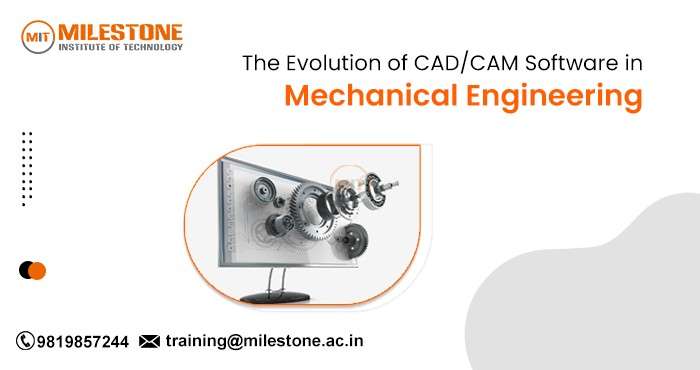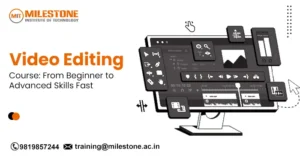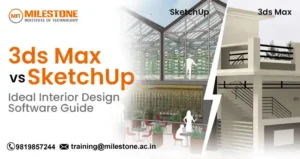The Evolution of CAD/CAM Software in Mechanical Engineering
CAD/CAM software during a few decades has created a momentous change in mechanical engineering influencing design creation, simulation, and realization. This software greatly contributed toward productivity, precision, and efficiency of these two tools. The present article portrays the evolution of CAD/CAM software with respect to the approach adopted historically, advances, and present influences on mechanical engineering.
What is CAD and CAM Software?
Before diving into its evolution, let us first explain what CAD/CAM software really means. CAD is not so much a program; it is a broad term that summarizes the role of computers in design creation, modification, analysis, or optimization. While CAM does assist in manufacturing susceptible software in defining the operation directed at a manufacturing machine in a process, these include molds and even machining processes. The software is effectively allowing engineers to test and design a product with immense precision and efficiency before it could be manufactured and released into the market.
The Early Days of CAD/CAM
CAD/CAM software started its existence in the mid-20th century. The earliest CAD systems were developed in the 1950s and 1960s to automate the tedious and error-prone processes of manual drafting. One of the early pioneers of CAD was Ivan Sutherland, who wrote a program in 1963 called Sketchpad-some believe it to be the most enormous leap forward yet made in graphical design.
At the same time, CAM technology grew out of its own root, though early systems mainly were designed for numerically controlled (NC) machines. In the 1970s CAD and CAM began to be integrated into each other; this period is thus considered as the beginnings of a more automated approach to design.
The Rise of 2D CAD Software
In the earlier years,
mechanical engineering was ruled by 2D CAD software. This means that engineers could make long and accurate flat drawings of their designs and quite literally save the time spent in the tedious job of hand drawing. Others were rapidly commercializing in the late 1980s, such as
AutoCAD, which became so famous because of the user-friendly interfaces and a little more accuracy than conventional means.
Key Developments in 2D CAD Software
- Increased Precision: The earliest 2D CAD software offered their creators estimation tools as compared to manual methods. This was the first time that scaling parts with simple means and performing measurements accurately was practicable in design.
- Digital Drafting: Converting from drafts on paper to digital format meant that edits were, at best, unreasonably fast. This reduced the time taken for modifications.
- File Sharing and Storage: CAD software also established itself as the first means to be able to save designs digitally. This enabled teams to collaborate even better and exchange files across entire departments or geographical locations.
Transition to the 3D CAD Software
The dominance of the technology made them realize the limits of 2D CAD software. The 1990s witnessed the growth of 3D CAD software, where there was growing need for models that were more complex and more realistic. 3D CAD allowed engineers to build models with depth and three-dimensional accuracy. It became very crucial particularly in mechanical engineering where the parts geometries and movements were of utmost importance.
Advantages of 3D CAD Software
- Realistic Projections: The engineers generated 3D models that looked very much like the final product.
This invariably drives better design decision-making and communication.
- Simulation Functions: 3D CAD software usually comes with simulation tools.
These simulation tools allow the exploration of mechanical behavior into various environments. This allows greater optimization in the design process.
- Faster Prototyping: CAD allows for rapid virtual prototyping. Physical product prototypes cost much less and are assembled very quickly.
- Common software tools for CAD in 3D: Different tools deal with design, simulation, and prototyping.
Some Popular 3D CAD Software Tools
As various pieces of 3D CAD software reached mechanical engineering industry standards in the late 1990s and early 2000s, popular ones are likely to have included many examples since then – Solid Works, CATIA, and PTC Creo, among other commodity software in the mechanical engineering circuit.
The Integration of CAM into the Process
While CAD was primarily focused on design stages, CAM mainly concentrated on automatic control of manufacturing processes. The integration of CAD and CAM in the European market during the past decade provides a seamless information flow through which one could create models and, by means of these hypothetical designs, directly input manufacturing instructions into machines.
Key Benefits of CAD/CAM integration
- Increased Efficiency: This synergism provides more quick and expedient product development cycles by reducing the time from design to production.
- Error Reduction: Direct transfer from CAD model to the CAM system reduces the possibility of a manual mistake during data entry or misinterpretation of design.
- Better Quality Control: CAM software often features tools for examining the manufacturing process, so as to make sure that the finished product adheres to the intended guidelines.
Advancements in 3D Printing and CAD/CAM
In the last few years, integrating 3D printing with a CAD/CAM software has been one of the biggest transformation changes in the industry. With 3D printing, rapid prototyping, along with even direct manufacturing of parts, are driven by digital designs from CAD systems. This confluence has opened up new possibilities for quick prototyping, bespoke manufacturing, and low-volume production.
Impact of 3D Printing on Mechanical Engineering
- Reduction in Prototyping Times: Engineers can now make rapid prototyping of physical models that hasten the iteration process with the help of 3D printing.
- Complexity in Custom Parts and Designs: Complex custom parts which, through conventional means, prove troubling or impossible to fabricate are now feasible.
- Less Material Wastage: Additive-based 3D printing works by assembling an object layer by layer, thus materially eliminating waste, as opposed to traditional subtractive techniques.
The Future of CAD/CAM Software
CAD/CAM holds great promise further into the future. Developments currently underway in AI, IoT, AR, and robotics will render systems ever more intelligent and efficient, changing the engineer’s approach toward design, simulation, and product manufacturing. The next developments will take mechanical engineers to the next genre of precision, efficiency, and creative innovation.
Conclusion
CAD/CAM software has been a game-changer in mechanical engineering, enabling faster, more accurate, and highly efficient design and manufacturing. From many years, CAD/CAM software has evolved from typical 2D drafting tools to advanced 3D modeling and simulation tools.
CAD/CAM software is a present-day engineering miracle, enabling prototyping and manufacturing of parts with far larger accuracy. Since the pair of CAD/CAM software has already integrated with 3D printing and smart technologies. Innovation will still drive CAD/CAM software in the future of engineering.




